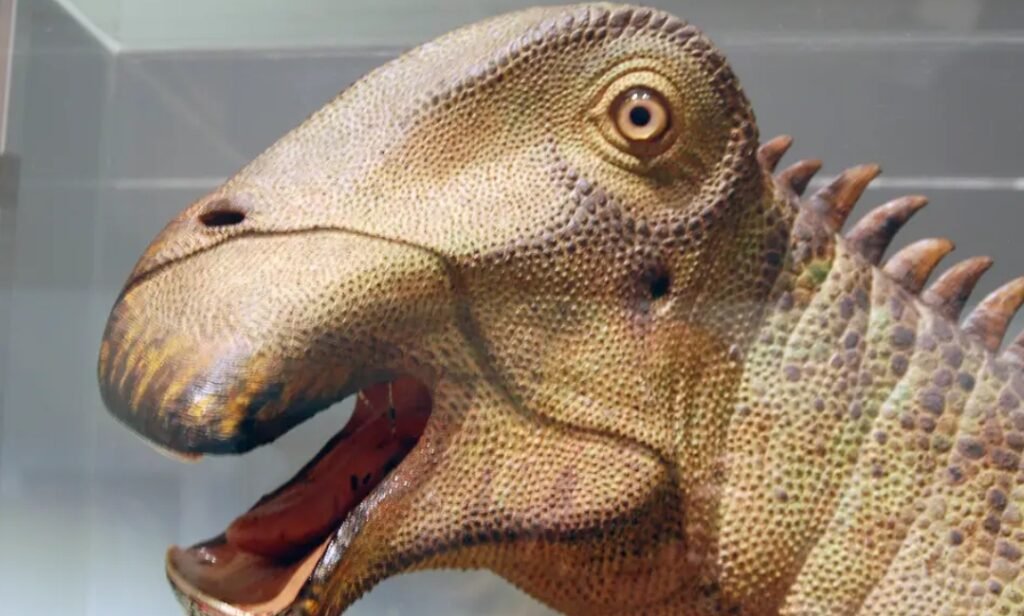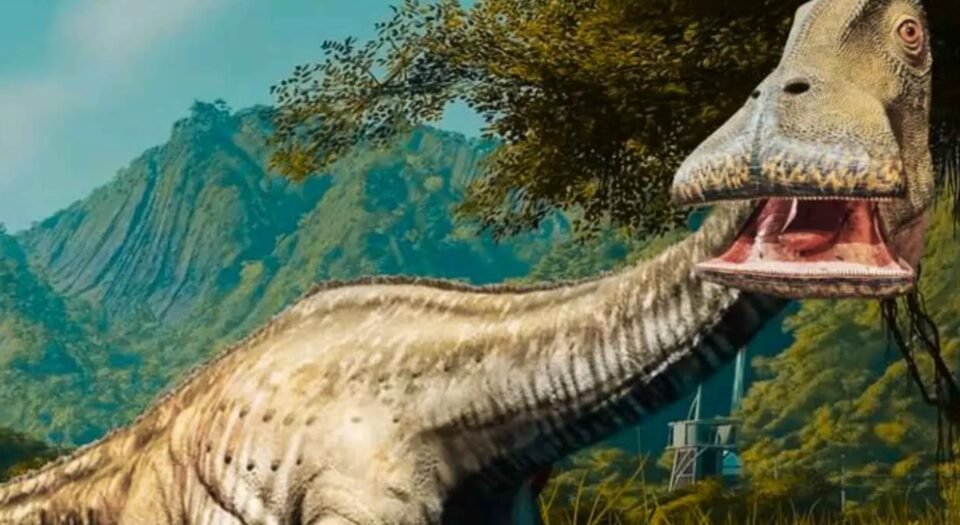At first glance, the question almost sounds like a joke. What dinosaur has 500 teeth? It feels like something made up by a kid obsessed with dinosaurs or a trivia fan trying to catch you off guard. But as odd as it sounds, it’s a real question. And behind it is one of the most unique and misunderstood dinosaurs ever discovered.
Yes, there was a dinosaur with that many teeth. And no, it wasn’t some terrifying, meat-eating beast with rows of razor-sharp fangs. It was actually a gentle, ground-grazing plant-eater that lived over a hundred million years ago. Its name? Nigersaurus.
Meet Nigersaurus: A Gentle Herbivore with a Unique Smile
Nigersaurus was a dinosaur that roamed what is now the Sahara Desert during the middle of the Cretaceous period. Back then, the region wasn’t the dry, dusty landscape we know today. It was green, filled with rivers and vegetation. A perfect home for a dinosaur that lived to graze.
Unlike the towering dinosaurs you might picture when you hear the word “sauropod,” Nigersaurus was relatively small. It grew up to about 30 feet in length—roughly the size of a school bus—and weighed around four tons. That’s still big by today’s standards, but for a sauropod, it was on the smaller side.
What made Nigersaurus stand out wasn’t its size or its long neck. It was its mouth. More specifically, the sheer number of teeth it had and how it used them.
So, Did It Really Have 500 Teeth?

It did—sort of. Nigersaurus had a total of around 500 teeth in its mouth, but not all of them were active at the same time.
Here’s how it worked: at the front of its wide, flat snout were rows of small, closely packed teeth, perfect for snipping soft plants. But behind those active teeth were stacks of replacement teeth. When one wore down—and that happened often—a new one would move up to take its place. This ongoing cycle meant Nigersaurus always had hundreds of teeth in reserve.
Suggestion: CBS Has Canceled Six Shows Before The New 2025–2026 TV Season.
Altogether, it had about sixty columns of teeth on the top jaw and a similar number on the bottom. With so many replacements lined up and ready to go, scientists estimate the total number of teeth inside its mouth at any time was around 500.
A Mouth Built for Grazing
The design of Nigersaurus’s jaw was unlike any other dinosaur scientists had studied before. Most animals have mouths that point forward. Nigersaurus, however, had a mouth that pointed straight down.
Its snout was so wide and flat that paleontologists have compared it to the end of a vacuum cleaner. While it didn’t suck up food, its shape was perfect for grazing across low-growing plants. It likely walked with its head close to the ground, sweeping side to side as it fed. This dinosaur wasn’t reaching up into tall trees like some of its relatives. It was focused on the soft stuff growing at ground level—ferns, horsetails, and other leafy greens.
And because it spent so much time eating, it needed those constantly renewing teeth to keep up with the wear and tear.
A Skull as Light as Paper
Another fascinating detail about Nigersaurus is the delicate structure of its skull. Some parts were so thin that they’ve been compared to paper or eggshells. This made it very difficult to study the fossils at first. The bones were so fragile that handling them directly often caused them to break.
Also Check: Is Consumer Services A Good Career Path For Long Term Job Growth?
Eventually, scientists used advanced CT scans and digital modeling to piece together the full structure of its skull. What they found confirmed that Nigersaurus was perfectly built for its low-to-the-ground grazing lifestyle. Its mouth, teeth, neck, and head posture all worked together to help it feed with minimal effort.
When and Where Was It Discovered?
The first bones of Nigersaurus were uncovered in the 1970s in the Republic of Niger, a country in West Africa. But they didn’t make much of a splash at the time. The fossils were incomplete and fragile, and paleontologists couldn’t learn much from them.
That changed in the late 1990s, when a team led by American paleontologist Paul Sereno returned to the region and discovered a much more complete skeleton. With this new material, they were able to study the dinosaur in greater detail. In 2005, the species was officially named Nigersaurus taqueti, in honour of the French paleontologist Philippe Taquet, who had worked on the earlier finds.
Life in a Lush, Prehistoric Sahara
During the time Nigersaurus lived, the Sahara was nothing like it is today. It was a warm, wet environment filled with rivers, lakes, and dense plant life. Nigersaurus would have spent its days slowly walking through floodplains, grazing on whatever soft greens it could find.
You May Also Like: George Foreman Home Warranty Review: Should You Trust It?
It probably moved in herds, which offered some protection from predators. Although it wasn’t fast or fierce, safety in numbers would have helped. And with its low head, small body, and non-aggressive nature, Nigersaurus likely relied more on peaceful survival than confrontation.
How Did It Become an Internet Sensation?
Here’s the part of the story where things get weird.
In recent years, the phrase “What dinosaur has 500 teeth?” started trending online, mostly on Reddit and in meme culture. Sadly, many people were using the name Nigersaurus in a mocking or offensive way, without any interest in the actual science behind it.
It became a meme, but not a particularly respectful one.
And that’s a shame—because Nigersaurus is an incredible animal. Its biology, its adaptations, and its place in Earth’s history are all genuinely fascinating. The fact that its name sounds unusual to modern ears shouldn’t distract us from the real story: this was a uniquely designed herbivore with a brilliant natural system for constant feeding.
Related: What Is the 4th Hole Slang On TikTok And Why Is It Trending?
Why Nigersaurus Deserves a Second Look?
Forget the memes for a moment. Nigersaurus wasn’t a joke, it was a dinosaur that evolved in remarkable ways to thrive in its environment.
Its mouth worked like a well-designed machine, built for efficiency rather than force. Its teeth replaced themselves like clockwork, allowing it to graze non-stop without wearing down. Its body was small but sturdy. Its skull was light but perfectly functional. Everything about it was adapted for a quiet life focused on one thing: eating plants all day long.
It didn’t roar. It didn’t hunt. It didn’t fight. But in the world of dinosaurs, there’s something impressive about that kind of simplicity.
The Final Word
So, if someone asks you what dinosaur had 500 teeth, you now have a better answer than just a name. You can tell them about Nigersaurus—a dinosaur with a wide, downward-facing mouth, a head as light as paper, and a jaw that worked like nature’s own conveyor belt.
You can tell them about a quiet grazer that lived in ancient Africa, sweeping its face across the ground to feed. And you can remind them that even the strangest-sounding questions can lead to some of the most fascinating discoveries. In the end, Nigersaurus may not be the most famous dinosaur, but it certainly has one of the most memorable smiles in prehistory. Just like curiosity about lesser-known prehistoric creatures sparks interest, public fascination with modern figures, such as the rise of internet personalities and questions about Danielle Bregoli net worth, shows how unexpected stories often capture the biggest attention.


